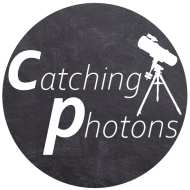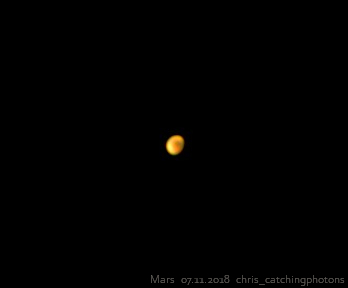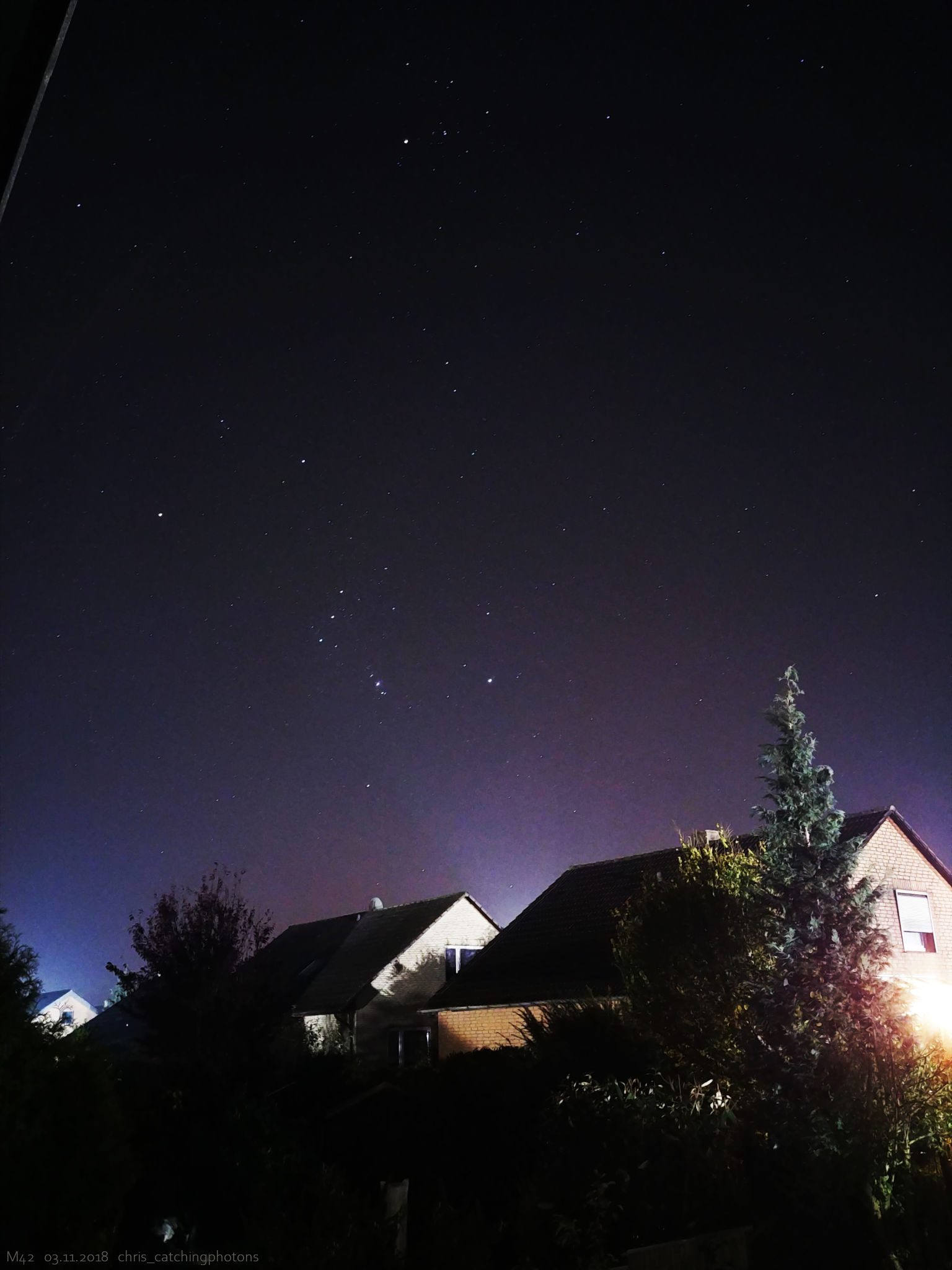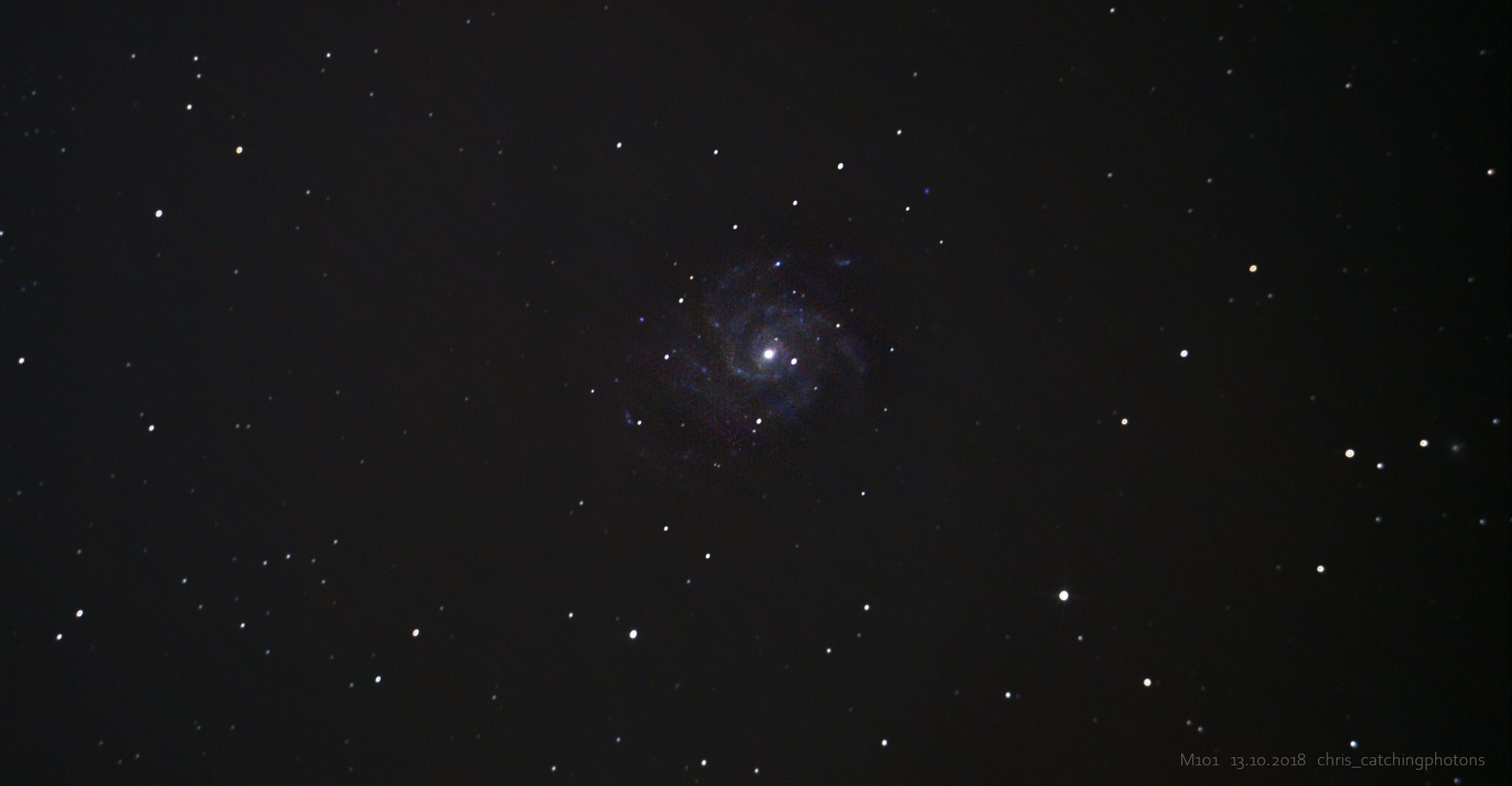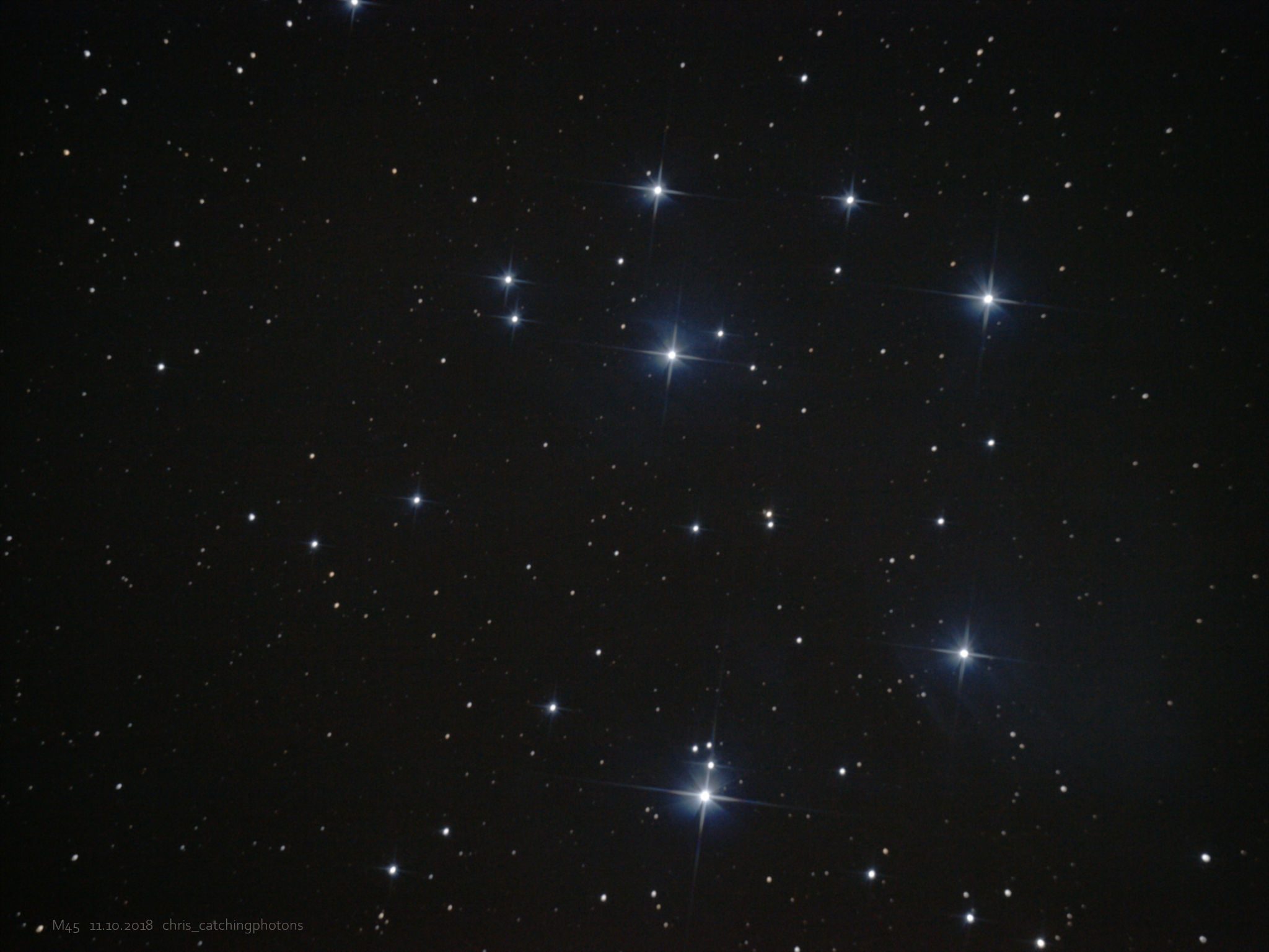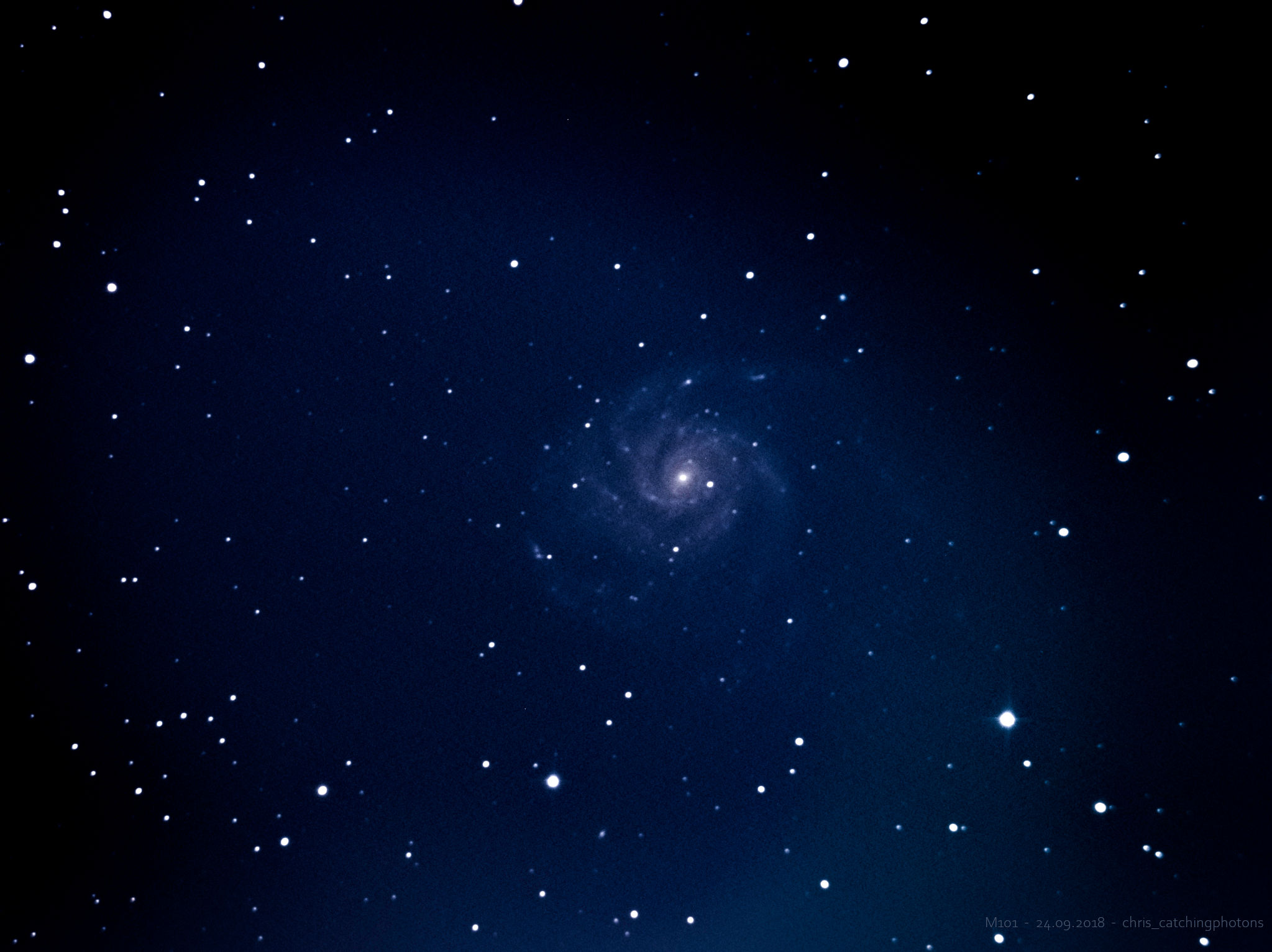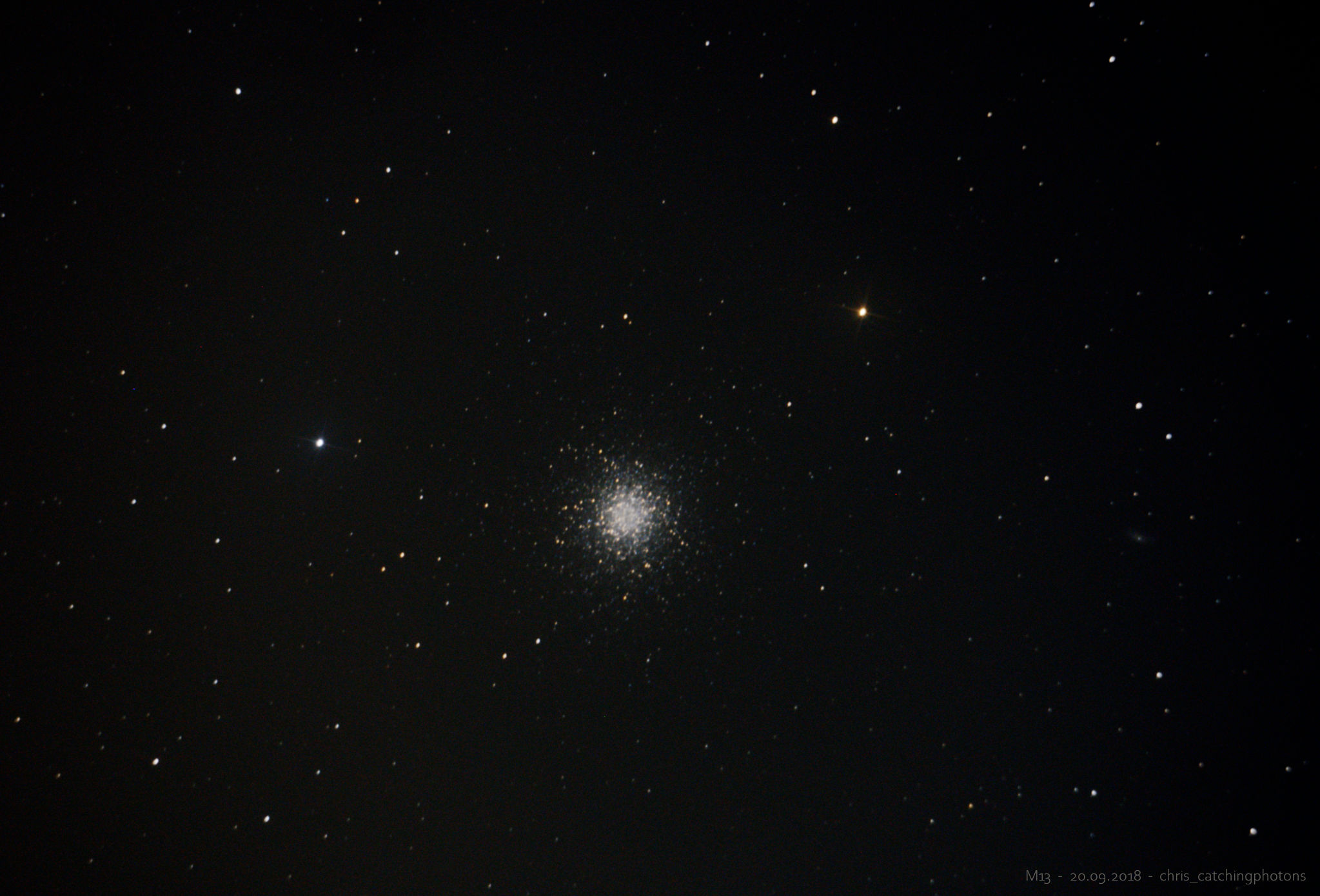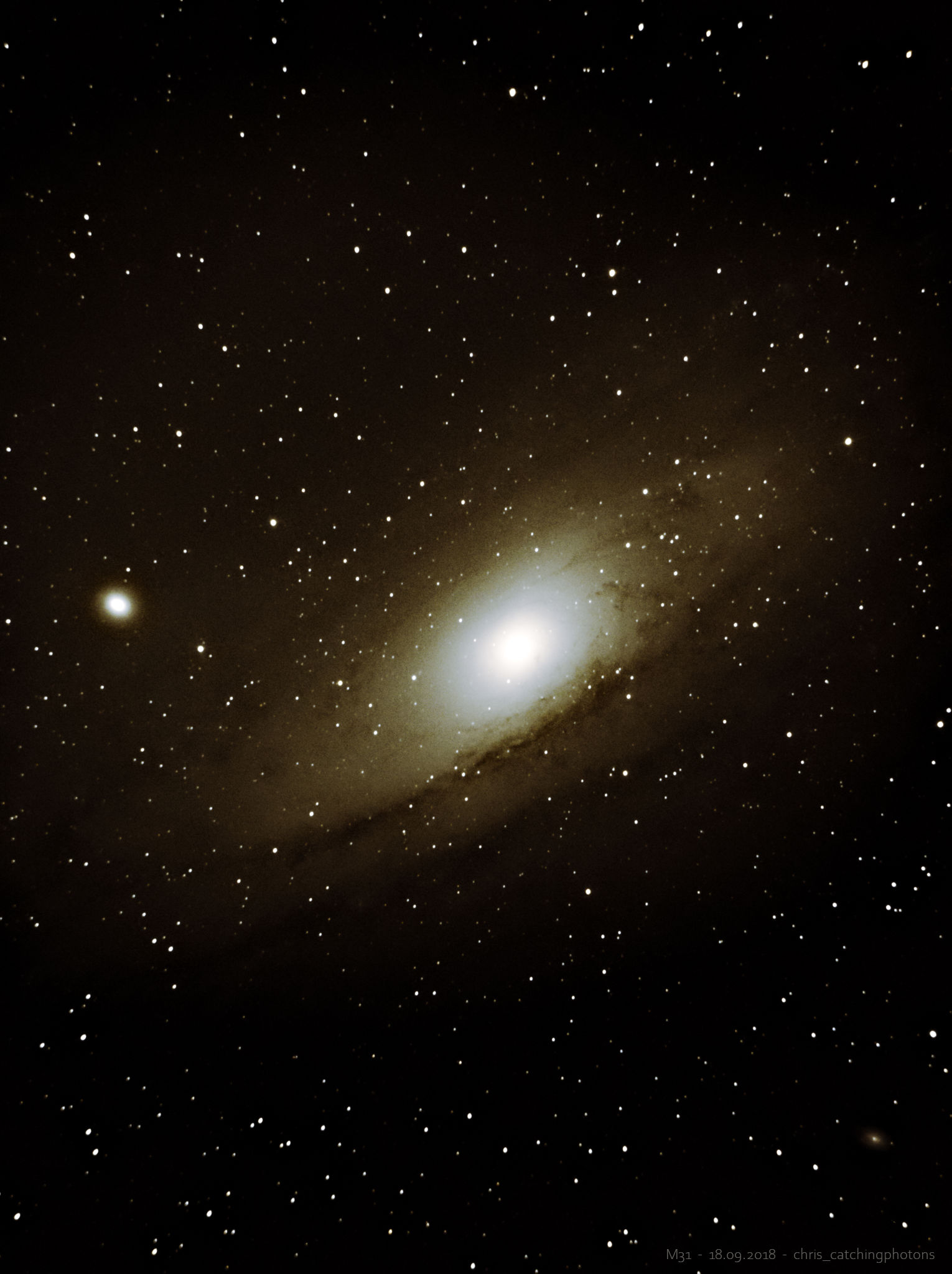07.11.2018
New aspects: First use of modded Logitech webcam – Fist stacking of unguided DSLR shots
Acquisition:
Mars: After fiddling around with the old Canon compact camera “PowerShot SX240 HS” held in front of my eyepieces I ordered a cheap Logitech webcam and modded it for the purpose of using it as an astro camera. The modification was quite simple: I removed the lens in front of the sensor and turned off the status LED. Then I glued an old film roll casing in front of the webcam. This casing happened to have exactly the same diameter as the 1 1/4” eyepieces (accident?). So with the help of “Sharpcap” and the drivers from Logitech I was able to grab a short .avi video of Mars with the camera in prime focus. I tried about ten videos with different exposure and gain settings refocusing between each videos. With the webcam and its drivers I got about 30 fps witch is not too bad for this modded equipment. On the SharpCap screen I could see Mars as a reddish disk wobbling around, showing me the bad seeing conditions. Nevertheless I actually could see some darker areas on the surface just by looking at the unstacked video files. A new area!
„#12: 120′ of Orion & M33 – Mars & unguided Pleiades“ weiterlesen